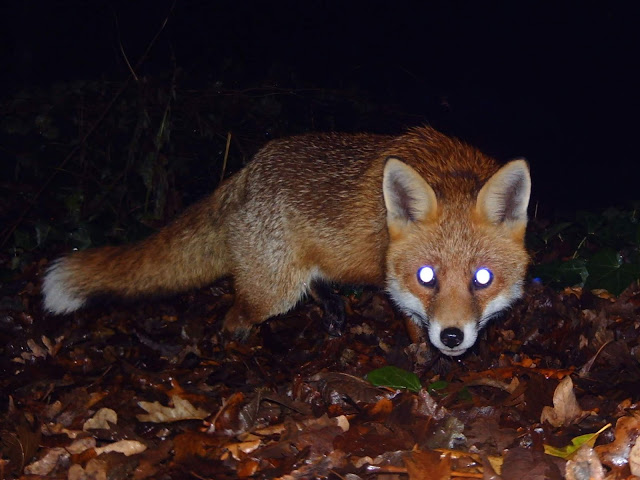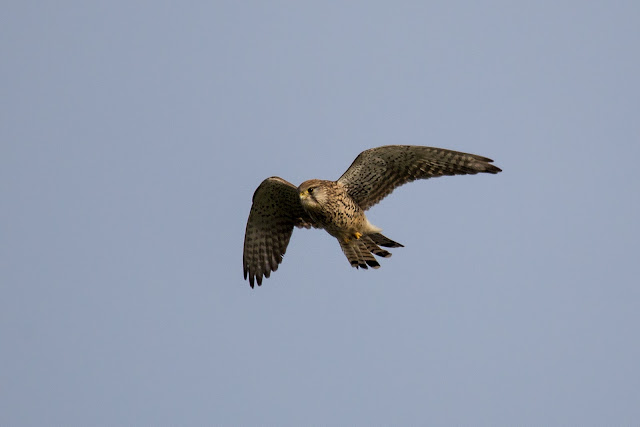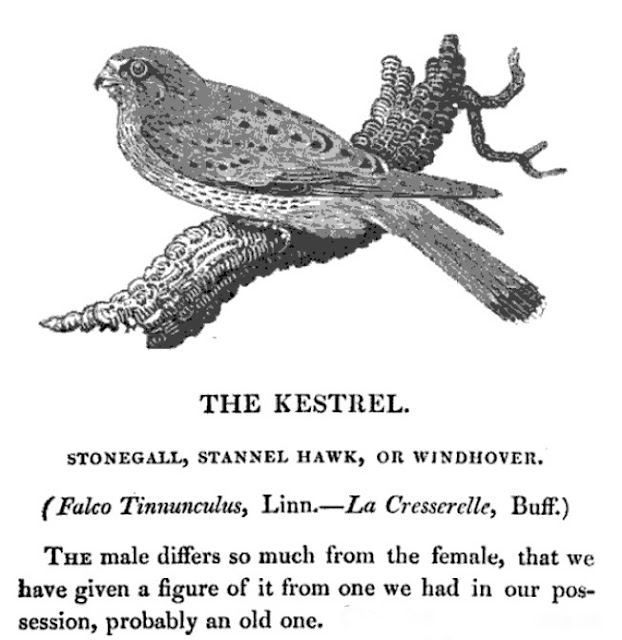My mate Alan the electrician has been doing some work on my house, including installing a new distribution board. To his surprise, when he opened the old one he found a mummified bank vole which had been electrocuted between the cables to the main switch - something Alan has never seen before. Amazingly this had happened without blowing the main fuse.
Many thanks to Alan for all his hard work - and for supplying the title for this post!
My Blog List
Thursday 31 January 2019
Tuesday 29 January 2019
The early days of FoxCam
I started work with my trail cameras some time before I started this blog. While sorting through some old photos I found these taken with the Wingscapes Birdcam in the garden which haven't featured on the blog before. I thought you might like to see them.
In the early days I was putting the food (bait) in the wood not realising that the foxes would come right to the back door as they do now.
The photo below was the first success I had - not a bad start. In most of the photos the fox looks directly at the camera (probably because it can hear the flash charging) and causes white eye but in this one the eye looks natural.
Saturday 26 January 2019
Bird of the week - Kestrel
I had the good fortune of seeing this kestrel earlier in the week. It was hovering over grassland at the top of a cliff and I was at the base of the cliff with the wind behind me. The bird was directly above and facing me so I was able to take a few photos.
I think this bird is a juvenile because of the heavy markings on its breast feathers but it might be an adult female.
The kestrel (Falco tinnunculus) is the most numerous bird of prey in the UK but is amber listed because of population decline. This BTO graph shows a 40% decline in the past 20 years.
I can remember 30 or so years ago when kestrels would be seen hovering every few miles along the motorways. Now they are an uncommon sight, and we are more likely to see buzzards and red kites when driving. Kestrels are fairly widely distributed but less common in Wales, Scotland, Ireland and south west England.
Thomas Bewick was so struck by the different plumage of male and female kestrels that he illustrated them both in his A History of British Birds (1797), something he rarely if ever did for other birds.
Archibald Thorburn painted male and female kestrels and a comparison with other small falcons.
Friday 25 January 2019
Restart
I was near Tynemouth again earlier in the week so it seemed rude not to call in to see the black redstart again. Although it was last week's Bird of the Week I thought it wouldn't hurt to post a few more photos. It really is a pretty bird, behaving a bit like a cross between a robin and a flycatcher.
Wednesday 23 January 2019
Sparrowhawk news
The funny thing is I have got so used to him being here that I don't take much notice of the sparrowhawk these days, other than to check if he is here. I have now seen him in the garden every day since Christmas Eve but most of the time he doesn't do much. He spends a lot of time sitting and watching, sometimes for hours at an end. He does less preening than last winter's bird but makes more kills in the garden. He can overdo it at times, spending so long in the kitchen garden that all the birds disappear. It is a bit like overfishing - you have to be careful you don't get too greedy. The birds normally empty the feeder there in less than two days but at present it lasts a week. Here is the reason why.
He also hunts more often outside the sitting room and kitchen windows.
At the weekend he upped his game and caught a blackbird (100g) which has a lot more meat than his usual blue tits (10g). He was very wary because he was out in the open and he soon flew off with his prize to eat it in private.
Despite that he was back again early the next morning, looking for breakfast.
He also hunts more often outside the sitting room and kitchen windows.
At the weekend he upped his game and caught a blackbird (100g) which has a lot more meat than his usual blue tits (10g). He was very wary because he was out in the open and he soon flew off with his prize to eat it in private.
Despite that he was back again early the next morning, looking for breakfast.
Monday 21 January 2019
Spring cleaning
New year was the time to clean out the nest boxes again. National Nest Box Week isn't until a month from now but I thought I would get ahead of the game. Every year I plan to keep a closer eye on the boxes to see what is using them but by late spring / early summer it isn't always easy to see some of them and there is a lot else to do. So it is interesting to check on which ones have been used and by which birds.
This is the typical appearance of a tree sparrow nest. It is mostly grass and feathers and is packed to the roof. The birds continue to add to it as the season progresses so by the time they get to their third brood it is a wonder the chicks can get out.
Several empty tree sparrow boxes looked like this. I don't know if the birds changed their minds or if they were just practising. They sometimes carry in nest material well before the nesting season . Perhaps they decided they preferred a different box.
The three box terrace was very busy last summer with at least two broods in the left hand box. I am not sure why the middle box wasn't completed. Perhaps one of the pair was predated before they could finish the nest.
Two other tree sparrow boxes each contained an unhatched egg. I presumed the others hatched and the chicks fledged OK.
This blue tit nest contained two eggs and looks as though it never had more than that (it is very neat - any growing chicks would mess it up a lot as they got bigger and exercised their wings before leaving). I expect one of the parents was predated before any more eggs could be laid.
Another blue tit nest contained two small skeletons. From their size I reckon the chicks were fairly well grown. I expect this is also down to loss of a parent.
I haven't had much success with open fronted boxes in recent years, especially when on a tree like this.
When I first moved here nearly 30 years ago I used to have spotted flycatchers nesting in the garden every year. This photo, scanned from an old print, was taken through the kitchen window in 1990. I haven't seen spotted flycatchers here since 2000 but I still keep a couple of open-fronted boxes in the hope that they may one day return.
A couple of well hidden open-fronted boxes do a bit better. This one is small and tucked away on a fence. I expect this was a wren's nest.
Nearby is this one, which often houses robins but this was probably also a wren's nest. The male builds several nests so is is hard to say whether either of these was used.
Lots of other birds nest in the garden but not in boxes. There were several starling nests and tree sparrow nests in tree holes and plenty of other nests in hedges and ivy, etc. Of 27 boxes in the garden last year 7 had tree sparrow nests, 6 had blue tit nests (3 used, 1 abandoned with two eggs, 1 abandoned with two skeletons, and one abandoned before completion - the camera box), 2 had wren nests and 12 were not used. Overall that is 56% occupancy. I have been experimenting with different sizes and shapes, depending on what scraps of wood were available and my impression is that the smaller boxes were less successful. There is room in the garden for a few more boxes so I'll make some up in the next few days.
This is the typical appearance of a tree sparrow nest. It is mostly grass and feathers and is packed to the roof. The birds continue to add to it as the season progresses so by the time they get to their third brood it is a wonder the chicks can get out.
Several empty tree sparrow boxes looked like this. I don't know if the birds changed their minds or if they were just practising. They sometimes carry in nest material well before the nesting season . Perhaps they decided they preferred a different box.
The three box terrace was very busy last summer with at least two broods in the left hand box. I am not sure why the middle box wasn't completed. Perhaps one of the pair was predated before they could finish the nest.
Two other tree sparrow boxes each contained an unhatched egg. I presumed the others hatched and the chicks fledged OK.
This blue tit nest contained two eggs and looks as though it never had more than that (it is very neat - any growing chicks would mess it up a lot as they got bigger and exercised their wings before leaving). I expect one of the parents was predated before any more eggs could be laid.
Another blue tit nest contained two small skeletons. From their size I reckon the chicks were fairly well grown. I expect this is also down to loss of a parent.
I haven't had much success with open fronted boxes in recent years, especially when on a tree like this.
When I first moved here nearly 30 years ago I used to have spotted flycatchers nesting in the garden every year. This photo, scanned from an old print, was taken through the kitchen window in 1990. I haven't seen spotted flycatchers here since 2000 but I still keep a couple of open-fronted boxes in the hope that they may one day return.
A couple of well hidden open-fronted boxes do a bit better. This one is small and tucked away on a fence. I expect this was a wren's nest.
Nearby is this one, which often houses robins but this was probably also a wren's nest. The male builds several nests so is is hard to say whether either of these was used.
Lots of other birds nest in the garden but not in boxes. There were several starling nests and tree sparrow nests in tree holes and plenty of other nests in hedges and ivy, etc. Of 27 boxes in the garden last year 7 had tree sparrow nests, 6 had blue tit nests (3 used, 1 abandoned with two eggs, 1 abandoned with two skeletons, and one abandoned before completion - the camera box), 2 had wren nests and 12 were not used. Overall that is 56% occupancy. I have been experimenting with different sizes and shapes, depending on what scraps of wood were available and my impression is that the smaller boxes were less successful. There is room in the garden for a few more boxes so I'll make some up in the next few days.
Saturday 19 January 2019
Bird of the week - black redstart
The black redstart (Phoenicurus ochruros) is about the same size and shape as a (European) robin. This one is either a female or a first winter male and has been in Tynemouth for several days.
Black redstarts are rare breeders in this country, often using urban or industrial sites.
Numbers are swelled by winter visitors.
Although black redstart is red listed in the UK numbers are increasing in the North East.
Thomas Bewick didn't include the black redstart in A History of British Birds (1797) although it was first described in 1774 in Germany. Perhaps it was a very rare bird in Bewick's day. It was included in William Yarrell's 1843 book of the same name with this engraving by John Thompson - not a great likeness as the head is too small, making it look more like a blackbird. Perhaps Bewick would have done better.
Archibald Thorburn did paint several pictures of black redstarts, all adult males.
Many thanks to Dave J for the tip-off. You can listen to Bill Oddie's BBC Radio 4 Tweet of the Day here. And watch a super BTO video on redstart identification here.
Subscribe to:
Posts (Atom)





























































